Risk Management Assignment: Evaluation of Tampere-Tramway Project in Finland
Question
Task: Prepare a detailed report on risk management assignment critically analysing the risks associated with Tampere-Tramway project in Finland.
Answer
Introduction
“Tempere tramway”, is an on-going project based on “Tampere City”, in Finland. This project involves proper planning of construction associated with a modern form of tramline that will contribute a great optimal influence on transportation system in the city on its completion. It is noteworthy that this report involves critical analysis and identification of various attributes of the mentioned project. It involves assessing risks, associated with the project while taking potential steps towards mitigating risks, through utilisation of appropriate “risk-management tools”, and strategic approaches. Furthermore, it also illustrates various contract risks and “contract law maxims”. Finally it will recommend potential ways in which different contractual provisions can be utilise for mitigating identified risks for assuring better project completion.
Critical Analysis of Project
“The Tampere Tramline Project”, is established through “City of Tampere”, in Finland, with a potential aim towards delivering best possible transportation for potential commuters, through progressing on connectivity and services across various destinations situated in Tampere (Railway-technology.com, 2016). A development phase regarding this project, further commenced in 2015, with an detailed form of implementation plan of “tracks and street planning”, that was prepared accordingly for the project. The cost for this project, is approximately 282.9 million Euros and it comprises of complex characteristics due to various kind of changing requirements of the project. Original estimated cost related to this project was approximately $268 million, which was further revised to $306 million in the developmental project phase (Railway-technology.com, 2016).

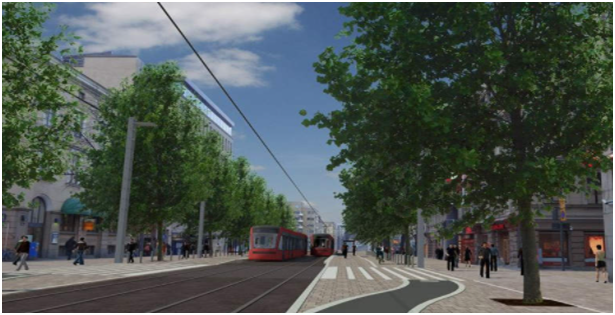
Figure 1: Railway Tampere Project Finland
(Source: Railway-technology.com, 2016)
It is essential to note that “Finnish Government”, further agreed to fund $76 million as per 2016, out of which, $59 million have been allocated for first-phase associated with the project, while the rest allocated for second-phase of the project (Raitiotieallianssi.fi, 2021). The first-phase of the project involves construction of major roads that connects central part of Tampere to different suburbs in “Vuores and Hervanta”, as planned in 2015. Second-phase includes best possible connectivity of Tampere city to “Lielahti and Lentavanniemi”, between 2015 and 2025 (Raitiotieallianssi.fi, 2021). During the third-phase of this project it will connect the road connectivity of Tampere city to “Koilliskeskus, Pirkkala as well as Ojala-Lamminrahka”, which will be after completion of phase2 that is after 2025 (Railway-technology.com, 2016).
It is noteworthy that the length associated with “light rail system”, will, be 17.6Km as per it first phase and 24.2Km as per its second-phase. In this concern, the third phase of this project will constitute of its length contributing to 43Km (Railway-technology.com, 2016).
Total cost of this potential system will be adequately 298 million euros. However, this project is further projected for increasing profitability of the government in Finland(Railway-technology.com, 2016).
According to the estimation of the project, the completion of this construction project will lead to nearly 10 million Euros profit on annual basis (Railway-technology.com, 2016). This is a great aspect of profitability when compared to present “all-bus based system”, transportation, which generates average form of losses to nearly 10 million Euros on annual terms. The designs of the potential form of trams were further finalised in the year 2018 and first nineteen vehicles associated with phase-1 have been further delivered in May 2020 (Raitiotieallianssi.fi, 2021).
Identification of Inherent Risks
This part of the report enhances potential identification as well as analysis of risks, which are associated with “Tampere Tramline Project”, in Finland. In this concern, construction of projects comprises of many stakeholders along with huge capital-investment as well as complexity (Yuanet al. 2018). It depends on potential standards of processes as well as preparations and comprises of major risks, which needs to be identified as well as mitigation for assuring successful project completion in the organisational standards.
Table 1: Risk Identification
Most critical Risks and their impact on project
Most significant risks that can have huge impact on Tampere
Tramway project include:
• Technical Risks (advancement failure)
• Labor risks
• Disaster risks
• Risk associated with catastrophic event
Most critical risks amongst the above-mentioned risks are technical risk and risk associated catastrophic event. ISO31000 risk-management process is implemented for identifying and assessing most critical risks in relations to project objectives of Tampere-Tramway project.
Technical Risk
Fundamental objective of Tampere-Tramway project is to ensure best quality transportation system for commuters. This project involves installation of information networks, control and surveillance systems, installation of overhead lines, automated cable transfers and so on (Tampere, 2019). Therefore, technological advancementsare major requirements for achieving objective of this project.However, there are certain risks associated with this advancement. For example, poor quality of design or defects in materials can affect functionality of surveillance systems or information networks. This will have a significant negative impact on this project as it will enhance chances of maintenance cost overrun in long-run. Poor design of overhead lines can lead to major failure. Besides that, it will also have negative impact on reputation of YIT and VR-track (major constructors involved in this project). Design flaws can also contribute to occurrence of a range of different safety risks.
Labour Risks
Risks associated with unskilled labours are always present in a construction project like tampere Tramway-Project. As this project involves installation of advanced automated technologies for ensuring smoother and speedier transportation, involvement of technically skilled labor is vital. However, in most cases, labors lack advanced technical skills, which causes deterioration of project performance. For example, one of the new surveyors had been assigned with responsibility of supporting machine-control systems in tampere tramway project; however, he had faced difficulties in using that particular 2D system as previously he did not work with that type of system as a full-time worker (Novatron, 2018). Hence, inability to work with advanced system can result in system failure during implementation stage. This can have negative impact on quality of project and it can result in lack of system functionality.
Operational Risks
These risks are always present in tramway projects, which can occur due to improper control over human resources, finance of systems. This can result in failure of internal design processes and breakdown of systems during implementation stage. Besides that external events such as earthquakes can also enhance this risk of Tampere-Tramway project as this project is based in Finland and certain areas of Finland are becoming earthquake-prone. These are unpredictable events and these can occur at any moment and enhance chances of project failure (Shin et al. 2018). This risk can also occur due to failure of subcontractors to perform in accordance with quality requirements of Tampere-Tramway project.
Catastrophic Events
Recently Covid-19 is most catastrophic-event that has caused entire world’s processes and activities to come to a halt. This event has caused huge uncertainties in tampere-tramway project. It has already brought some unexpected challenges for Tampere-Tramway project. Further it enhances risks of workers being infected due to which entire project activities will get stopped.
Risk-assessment Matrix
Table 2: Risk-assessment matrix
Mitigation of risks
Mitigation of most critical risks such as technical risks, labor risks, operational risks and risks associated with catastrophic events is necessary for ensuring success of Tampere-Tramway project. As per risk-assessment matrix, major risk that is highly likely and is known for having significant negative impact on project performance is technical risk. A risk-response plan can help in proper mitigation of different types of risks involved in Tampere-Tramway Project (Muriana and Vizzini, 2017). To understand causes and consequences of risks, application of cause-consequence risk-management tool could be effective. In tampere-tramway project as well, this model can be applied for assessing likelihood of each risk.
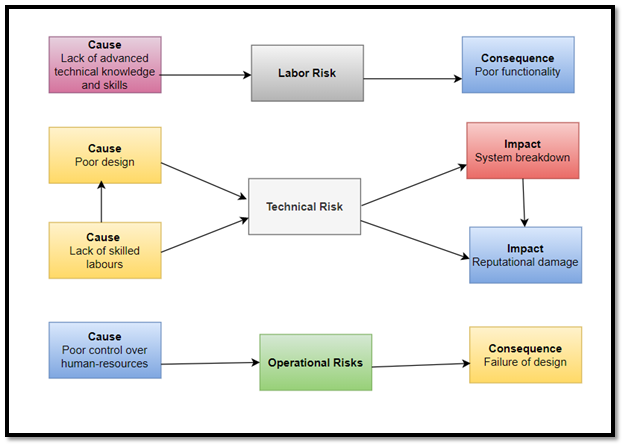
Figure 2: Cause-Consequence diagram for technical risk
(Source: Author)
From above cause-consequence diagram it is evident that as there are more than one risk-drivers (cause) and significant consequence on project performance in case of technical risk it is one of most critical risks in Tampere-Tramway project. For mitigation of these risks, a decision-tree risk-analysis and management toolcan also be used for identifying best mitigation option.
• Technical Risk Mitigation
Mitigation of Technical Risk would require hiring an external technical expert for reviewing technology implementation plan of this project to avoid risks of budgetary overrun and system breakdown after identification of technical issues. Expert would review design project of Tampere-Tramway critically to identify any error in design plan. Project design and should be divided into small sprints to evaluate and monitor performance of systems. It will help in identifying risks related to system failure in very beginning and hence, mitigation of this risk would become easier.Fromdecision-tree analysis (figure 3), it is clear that first option is most viable for mitigating technical risk.
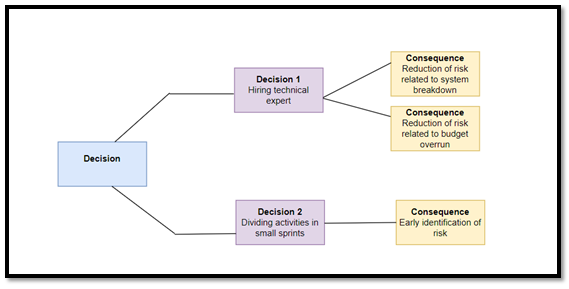
Figure 3: Decision-tree
• Labor Risk Mitigation
Mitigation of risk associated with shortage of skilled labour for implementing advanced technologies could be mitigated by developing a proper development and training plan for developing advanced technical skills of existing workforce of YIT and VR-track contractors.Apart from that, BIM implementation can be considered for tracking progress of work at implementation and design stage as it enhances visualization (Ahmad et al. 2018). Business-Information Modeling system could be beneficial for understanding whether workers are able to perform their tasks critically by tracking everyday performance of workers. Cross-training or need-based training system could be helpful for developing workers’ skills (Goh and Goh, 2019).
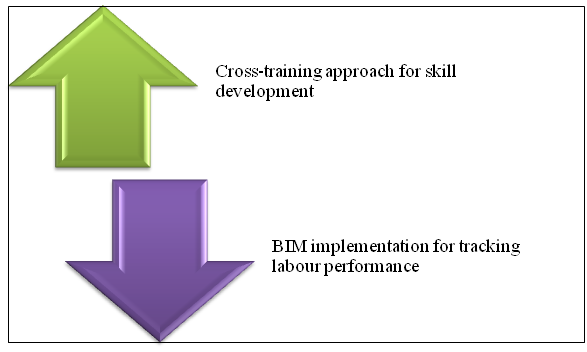
Figure 4: Effective mitigation measures for labor risk
(Source: Author)
Operational Risks
Poor control over workers and systems or processes can enhance this risk. Therefore, it is essential to have proper control over processes and workers involved in Tampere-Tramway Project. Most importantly, assessing quality of equipment being utilised for implementing advanced technology is vital for reducing chances of system malfunctioning. For example, installation of information networks requires use of different hardware and programs. Therefore, quality of these hardware systems or programs should be up to the mark. For this, setting quality criteria for vendor selection is essential. One of the suppliers in this project is Skoda-Transtech Limited who should be communicated regarding design quality criteria of this project (Comatec, 2021). Besides that, workers of both VR-Track and YIT should be communicated about project objectives and performance criteria to reduce risks of poor design of systems or system breakdown. Therefore, a stakeholder-communication plan development could be effective for proper risk-mitigation.
Stakeholder-communication plan for mitigating risks
Table 3: Stakeholder-communication plan for mitigating risks
Catastrophic-event risks
Mitigation of this risk should be of utmost importance as it can result in failure of entire project if not managed properly. Covid-19 is a catastrophic event that can make implementation of Tampere-Tramway Project impossible. There always exists a risk of getting infected while working at construction site. Hence, adoption of preventive measures is necessary for ensuring safety of workers and also for ensuring success of Tampere-tramway project.Adoption of measures such as shift-changes or flexible shifts, physical distancing, mandatory use of PPT kits can be beneficial for reducing negative impact of this event on project performance (Choi and Staley, 2021).
Table 4: Risk-Management Plan
Risk-perception has influenced this risk-assessment in a positive way. Risk-perception has been developed by going through results of other construction projects. For example, in Sydney light-rail construction-project, significant delays had been caused due to improper management of risks such as improper complexity information regarding technical and utility design works (Theguardian, 2020). Hence, this operational risk resulted in delays and budget overrun. Hence, as per new risk-perception mitigation of technical and operational risks should be prioritised.
Mitigation of procurement risk using contractual provisions and terms
One of most critical risks associated with Finland’s
Tampere-Tramway project is procurement Risk. Poor vendor-selection can be due to improper planning at initial stage. However, these risks can be mitigated through selection of proper use of contractual provisions and terms. For example, projects, which are based upon alliance-contract model, can be successful if contractual parties are aware of certain provisions and terms. Alliance agreement is premised on collaborative management of all risks associated with a project for achieving shared project objective and outcomes (Jultika.fi, 2017).
In Tampere-Tramway project, alliance contract-model has been used according to which all contractors have been working with collaboration to ensure project success by achieving shared outcomes. Contractors need to be aware of fact that in an alliance contract, procurement should be a negotiated procedure, which can help aid in mitigating risks associated with procurement in Tampere-Tramway project. Common kinds of procurement related risks are delivery risks, material-quality risks, procurement cost-overrun risks and so on. According to regulation of alliance contracting, procurement notice should be prepared through a negotiated process, which would set basic criteria for selection of vendors, partners’ roles, estimated cost of procurement and so on. According to terms of alliance contract, all members involved alliance are equally responsible for contributing and planning for requisite resourcesin construction project (Bergmann,fi, 2019). Therefore, in Tampere-Tramway’s project, both contractors YIT and VR-Track should take responsibility of developing a plan for procuring resources for ensuring collaborative procurement risk sharing amongst them. According to terms of alliance contract, in case of requirement for extra procurement budget, all parties involved in contract will be responsible for bear the same. As per terms of YSE 1988 contract law-maxim of Finland, contractor is liable to perform any modification in project requested by a client (Bergmann.fi, 2019). For this, a written agreement letter should be issued for this. As Tampere-Tramway’s project is based on an alliance-contract this agreement letter should be written after communicating modification and associated resource requirement with all contractors to share further risks associated with procurement budget-overrun or inefficiency of new resources that are to be employed for carrying out modification.Most important provision of alliance contract-law is that all parties involved in alliance contract must take collective responsibilities for sharing project risks as well as benefits. This provision can be used in Tampere-Tramway Project for reducing chances of ineffective procurement decision-making as all parties such as YIT and VR-Track would make collective decisions regarding procurement. It can reduce chances of unnecessary budget-overrun and inefficient project performance due to improper procurement decision-making.
Types of procurement agreement
There are two fundamental kinds of procurement agreement that can be formed amongst clients and contractors. These are:
• Time-Material Contract (Lindsjørn and Moustafa, 2018)
• Fixed prices with an economic-price adjustment agreement
In a time-material contract agreement, workers are paid based on time they spent for performing their activities. Besides that, material costs are paid based upon rise of their requirements during project. On other hand, in fixed prices with an economic-price adjustment agreement, pre-defined adjustments are made regarding prices. Therefore, contractors involved in Tampere-Tramway should make decisions by assessing applicability of these two types of agreements in project. In most cases, second option is chosen for reducing budget-overrun related risks (Lindsjørn and Moustafa, 2018). However, according to YSE 1988, contractors are required to make necessary changes in construction project if clients request for modifications.
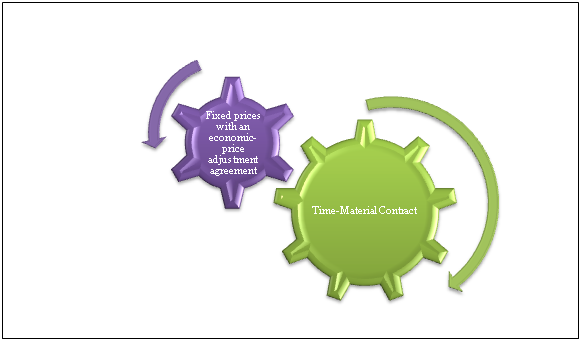
Figure 5: Types of procurement-agreement
(Source: self created)
Hence, selection of fixed-prices with an economic-price-adjustment agreement would not be a viable option as it would not allow for flexible procurement of resources required for performing modification activities requested by clients. On contrary to this, selection of first option would enhance risks of budget overrun as there will be requirement of paying suppliers in parts for acquiring new resources. This risk could be mitigated through a negotiated selection of low-cost suppliers. As per terms of alliance contract, all parties of this contract would share responsibilities of bearing extra cost required for acquiring resources for ensuring that proposed modifications are done properly. In case of any denial by either party to take responsibility of additional payment, that party can be sued for not adhering to terms of alliance contract.
According to alliance-contract law maxims, it is mandatory to include clause of “audit” for ensuring transparency. (Mills et al. 2021).All parties involved in alliance-contract of Tampere-Tramway project are entitled to review all documents and reports for ensuring best practices. Hence, procurement documents should be developed in a collaborative way for reducing chances of conflicts related to overrun of procurement budget or poor quality of procurement. It is essential for YIT and VR-Track to build a trustworthy relationship for ensuring that procurement risks are allocated amongst all contractors equally.
In alliance-contract there exist a stringent governance structure as all parties involved in contract are interested to review all kinds of decisions made by each other. Therefore, a trust-relationship should be built by involving all parties in making procurement decisions in case of a requirement for changes in project. At very initial stage, a document mentioning audit clause should be prepared in collaboration with each other for developing trustworthy relationship. In Tampere-Tramway Project, implementation of advanced technologies requires procurement of resources and materialsin different stage are required. For this, YIT and VR-Track should prepare a document of agreement before making further procurement decisions. This would be beneficial for better allocation of procurement related risks amongst contractors. Alliance contractors are expected to plan for having contingency budget for mitigating procurement risk. In case poor quality of materials is procured all contractors would be responsible for bearing losses. Vendors should be selected based upon a collaborative approach (Opponget al. 2017). Contractors within alliance contract of Tampere-Tramway project should be able to set quality criteria based upon requirements for implementing advanced technologies. A clause of making collaborative procurement-decisions should be added in contract. It will help to ensure effective sharing of procurement risks by Tampere-Tramway contractors.
Conclusion
Finally, it can be concluded that, risk-assessment should be imperative in every project for reducing chances of project failure. It helps in identifying risks at very beginning to ensure success of a project. For Tampere-Tramway Project as well, a comprehensive risk-assessment approach should have been adopted for reducing various risks identified in this project.ISO31000 risk-assessment approach should be adopted for early identification and mitigation of critical risks such as technical risks, labor risks, catastrophic-event risks and operational risks. This can require project management team of YIT and VR-Track to maintain a contingency fund for identifying and managing risk-drivers. Alliance-contract model can be helpful for effective risk-sharing amongst contractors and hence, proper mitigation of risks would be easier for contractors of YIT and VR-track.
Reference List
Ahmad, Z., Thaheem, M.J. and Maqsoom, A., 2018. Building information modeling as a risk transformer: An evolutionary insight into the project uncertainty. Automation in Construction, 92, pp.103-119.
Ansah, R.H. and Sorooshian, S., 2017. Effect of lean tools to control external environment risks of construction projects. Sustainable cities and society, 32, pp.348-356.
Bergmann.fi, 2019.Bidding for Project Alliances in Finland viewed on 20/09/2021
Bergmann.fi, 2019.Contracting Finland, viewed on 20/09/2021
Comatec, 2021.A tram designed based on end-user feedback viewed on 20/09/2021
Goh, M. and Goh, Y.M., 2019. Lean production theory-based simulation of modular construction processes. Automation in Construction, 101, pp.227-244.
Jultika.fi, 2017.CAPABILITIES FOR MANAGING PROJECT ALLIANCES viewed on 20/09/2021
Lindsjørn, Y. and Moustafa, R., 2018, May. Challenges with lack of trust in agile projects with autonomous teams and fixed-priced contracts. In Proceedings of the 19th International Conference on Agile Software Development: Companion (pp. 1-5).
Mills, Carolyn V. and Rodriguez, Michael, 2021. "Negotiate Book Contracts with Publishers". Storrs: UConn Library Presentations. 56.
Muriana, C. and Vizzini, G., 2017. Project risk management: A deterministic quantitative technique for assessment and mitigation. Risk management assignmentInternational Journal of Project Management, 35(3), pp.320-340.
Novatron, 2018.The Tampere tramway project – 2D maps replaced by 3D models viewed on 20/09/2021
Oppong, G.D., Chan, A.P. and Dansoh, A., 2017. A review of stakeholder management performance attributes in construction projects. International journal of project management, 35(6), pp.1037-1051.
Railway-technology.com, 2016, Tampere Tram Project, Viewed on 20/09/2021 fromhttps://www.railway-technology.com/projects/tampere-tram-project/
Raitiotieallianssi.fi, 2021, Tampere Tram, Viewed on 20/09/2021 from /https://raitiotieallianssi.fi/in-english/
Seker, S. and Zavadskas, E.K., 2017.Application of fuzzy DEMATEL method for analyzing occupational risks on construction sites. Sustainability, 9(11), p.2083.
Shin, M.H., Lee, H.K. and Kim, H.Y., 2018.Benefit–Cost Analysis of Building Information Modeling (BIM) in a Railway Site. Sustainability, 10(11), p.4303.
Tampere, 2019.In addition to the tramway, Tramway Alliance will fully rebuild Hämeenkatu – Construction along the tramway line remains busy in the third year of the project, viewed on 20/09/2021
Wei, C., Deng, X., Chang, T., Mahmoudi, A. and Ullah, S., 2021. Bibliometric evaluation of research on political risks in construction projects. Journal of Project Management, 6(4), pp.191-208.
Yuan, J., Chen, K., Li, W., Ji, C., Wang, Z. and Skibniewski, M.J., 2018. Social network analysis for social risks of construction projects in high-density urban areas in China. Journal of cleaner production, 198, pp.940-961.












